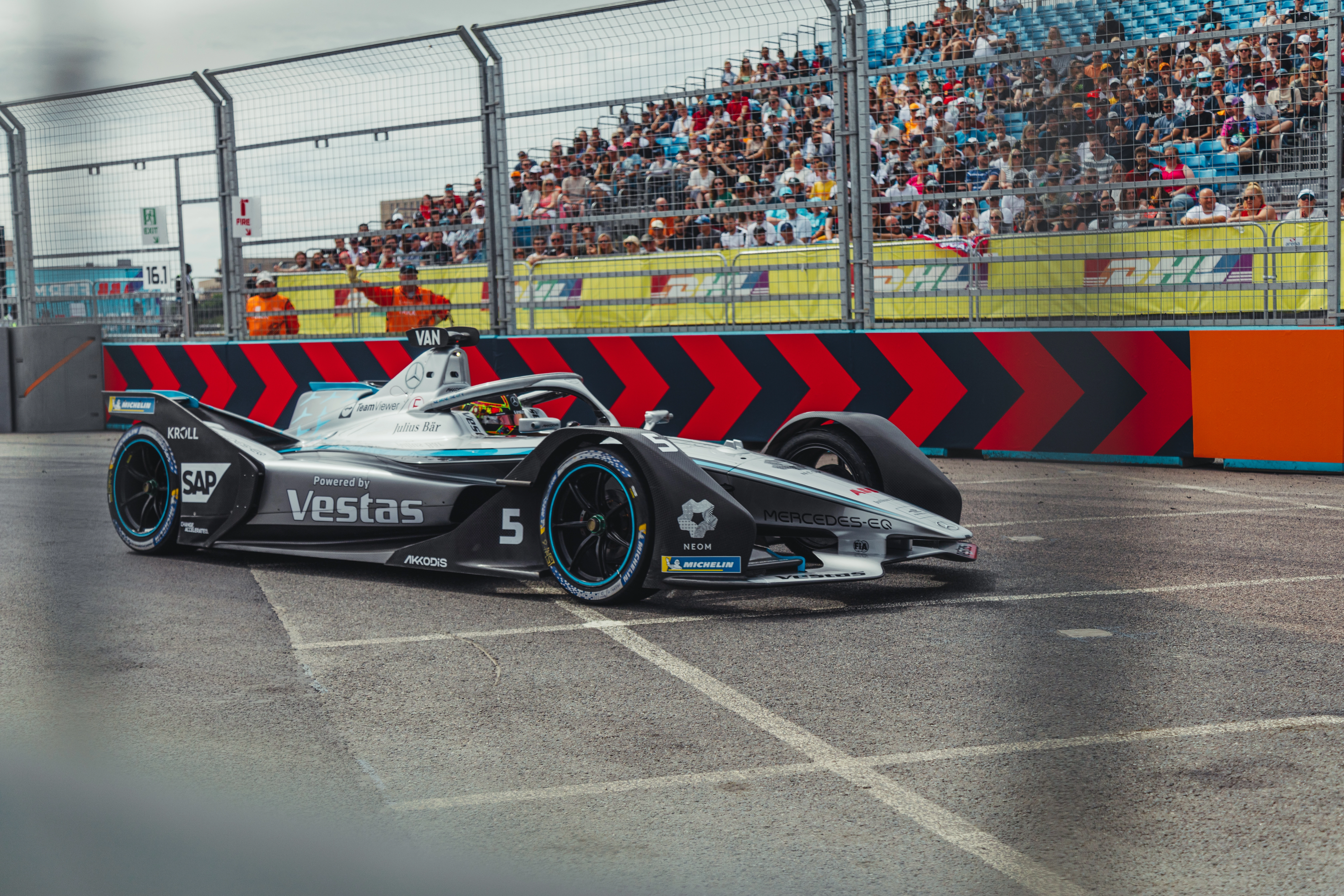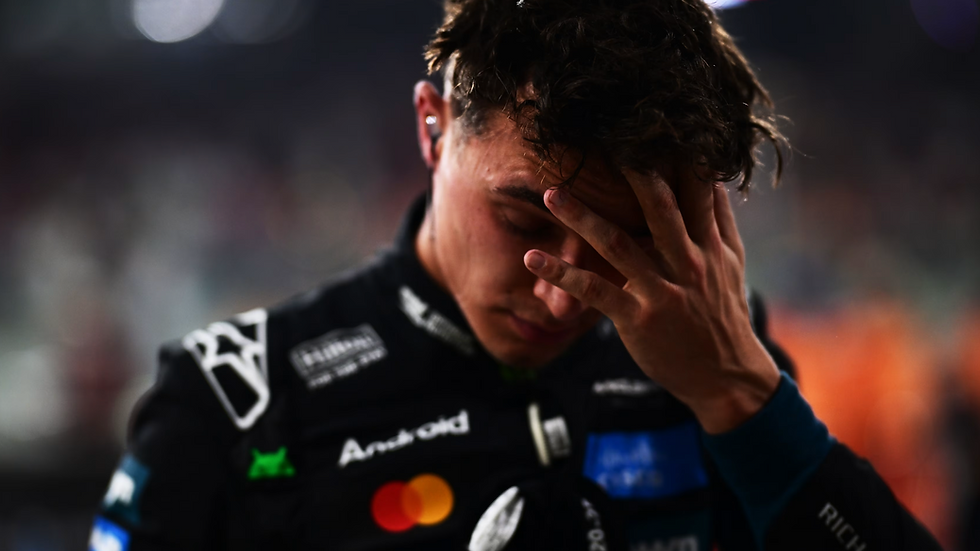IndyCar pole-sitters react: Iowa track record and a maiden oval pole
- Archie O’Reilly

- Jul 13, 2024
- 6 min read
Updated: Jan 6
Written by Archie O’Reilly
The grids have been decided for both races of IndyCar’s doubleheader at Iowa Speedway. Andretti Global’s Colton Herta overcame hybrid hiccups to take his maiden oval pole for Saturday’s night race, while Team Penske’s Scott McLaughlin achieved his third NTT P1 Award of the season - his second career oval pole - for the second race.
McLaughlin’s second lap - a 188.248 mile per hour average speed - broke the Iowa track record after its recent repave. The driver of the No.3 Chevy will line up alongside Herta on the front row for the opening race and will be joined by Chip Ganassi Racing’s championship leader Alex Palou for Sunday’s second race.
McLaughlin record lap headlines session
“Can’t be unhappy with two front rows,” McLaughlin said, going on to quip about starting alongside Herta for the first race. “[Herta] is a little bit lighter than me so probably a little bit faster on that first lap. We were watching Love Island together the last couple nights as well. Not a bad start - Love Island boys. Excited for what’s ahead. It’s fun. I love this place.”
McLaughlin ousted his Penske teammates by a considerable margin. Will Power had taken the last four poles at Iowa pre-repave but is starting fourth and 23rd after tapping the wall on his second lap. Josef Newgarden, winner of five of the last seven Iowa races, appeared to struggle with balance and will have an uphill climb from 22nd and 14th.
“I think the car has been really strong since we started testing here,” McLaughlin said in the wake of his breathtaking track-record lap. “Doing the lap later in the run, that’s sort of how it has been in the race as well. Hopefully that bodes well for us. Thankfully we were able to put a big enough time up at the start.
“It’s nice. It’s a good feeling going into tonight, especially where the track is probably going to be a little bit cooler and whatnot. Tomorrow when it’s a little bit hotter… [we] have a car for both ends.”
“Monkey off the back” for Herta
Herta, who had 12 IndyCar pole positions to his name already, had been missing a start at the head of the field on an oval since making his IndyCar debut in late 2018. Despite having no hybrid assistance due to a fault, he still managed to qualify first and fourth.
“It’s awesome [to] get the monkey off the back,” Herta said. “Car seemed good in all conditions in practice, should have a fast race car for tonight and tomorrow afternoon. A little bit of a bizarre one… we got it there at the end. I’ve been close. I’ve started off pole maybe two or three times on ovals in the past but just have never had that last little bit.”
Herta topped the recent pre-event test at Iowa as a marker of significant improvement for himself and Andretti on the revamped track amid what teams believe to be some form of reset.
“I think for the last few years, we wouldn’t even think about getting a pole here,” Herta said. “So it’s a step in the right direction for everybody here. I think the repave had a big play in that - I think it suits the car a lot better for us now. We have a much more competitive package.”
It came as a surprise to Herta that he was able to match McLaughlin, who topped Friday’s sole practice session of the weekend.
“I didn’t think that I could do the time that he did,” Herta said. “I thought I could get close. Still half-a-tenth to three-quarters-of-a-tenth off, which is quite a bit around a place like this. But we did make some changes overnight - we were struggling a little bit with balance in traffic on our new tyre runs yesterday.”
Herta’s tactic was to run a quick warm-up lap after observing others struggling somewhat on their first lap. It may have won him pole for the opening race, though with a trade-off.
“I think it was maybe a little too fast and that may have hurt us for the second lap,” he said. “Ultimately the balance was there for the first lap. On the second lap, it kind of got away from us. It’s so fast… qualifying is done for us in 32 seconds. It’s hard to make those adjustments going under the second lap.
“If I was to do it again, which I almost did, I probably would have adjusted a little bit more for the second lap.”
Hybrid issues wreak some havoc
As qualifying drew to a close and Palou, last in the scheduled order, had run, Herta was back in line ready to go again. The hybrid fault on his existing run - a stumbling block maybe inevitable during the hybrid’s debut oval weekend - meant he could not make the marginal gains that the hybrid system offers so the series gave him the opportunity to run again.
But confusion ensued. And with Herta knowing he was top spot for the first race, he did not want to risk having his time pulled and lose pole position by running again.
“It never worked so it never deployed, never regen’d,” he said. “As far as I understand it, it wasn’t a mechanical thing. The idea of going back out was it’s going to be free lap time to go back out there and run again in similar conditions that we just did. It’s 60 extra horsepower for four or five seconds - it’s big around this place, especially with a field so tight.”
Speaking in the immediate aftermath of qualifying, Herta was still a little miffed at the situation.
“There’s a lot of confusion, a lot of people saying different things,” he said. “I haven’t even talked to the team yet. They told me: ‘Run again.’ I got in the car. They said: ‘We’re not running again.’ I don’t really know what happened.”
Herta was not aware of the issue with the hybrid system until the opening corner of the warm-up lap, when the battery was already drained and “was unresponsive from then” and did not recharge.
Did this issue make a difference on Herta’s second lap, which sees him start fourth for the second race? His joking response was: “Let’s go with that, yeah. That’s all it was.”
McLaughlin was able to use the hybrid system. And while he understandably did not divulge any specifics, the tactical nature of its use was clear.
“You couldn’t regen until you crossed the start/finish line of your warm-up lap,” McLaughlin said. “I pressed it in the middle of [Turn 1] and charged basically through [Turn 1]. I’m not going to tell you where I deployed it… ultimately I thought we deployed it in the right spots when we needed to.”
Prospects for the races ahead
This could prove one of the most crucial qualifying sessions of the season if the track does transpire to be only a one-lane circuit with the high line as treacherous as it threatened to be based on practice.
“It is going to be hard to overtake,” Herta said. “It’s hard to find that last little bit and get runs. I think it could be compared to what Indy [500] races like in the mid and back of the field. You have to wait for a tiny bubble and then you can attack. I think the race might play out a lot like that.
“I think at the front it’s going to be tough. It’s going to be really tough once we get to lapped traffic - an interesting part of the race for the leaders.”
The Indy NXT race, won by Andretti’s Louis Foster, has offered some encouragement about multi-lane racing. But it will require drivers to work the second lane early in the race, otherwise passes for position or even passing of lapped traffic could be a challenge.
“I can’t see why it won’t work,” McLaughlin said. “Ultimately if you get 20-30 laps, everyone running the same line, it’s probably going to ruin that top lane. I imagine people in the back, people that haven’t had the best qualifying, are going to want to make some moves. You can definitely use it. It's just a matter of it being clean or dirty.”
Herta raised the point that track position will likely be key but drivers will “have to go somewhere and pass somewhere” so, even if it is slower, the high line will have to be used and tried by some drivers.
“But it needs to be consistent or else it’s not going to work,” he added.
With degradation lower than in years prior, Herta expects stint lengths to extend and a tyre-limited race could end up becoming a fuel-limited race this year.
“That’s going to be an interesting way for it to play out,” Herta said. “Just like every IndyCar race, I think the most important part is going to be the pit cycles.”















Comments